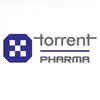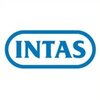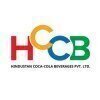Executive Production
300+ Executive Production Interview Questions and Answers

Asked in Ajanta Pharma

Q. What was your position in previous and draw an organogram showing your position and show 2 line above and 2 line below?
I was the Senior Producer at XYZ Productions.
Position: Senior Producer
Organogram: [Your position] - 2 lines above and 2 lines below
Example: Senior Producer - 2 lines above: Executive Producer, Line Producer; 2 lines below: Associate Producer, Production Coordinator

Asked in Ajanta Pharma

Q. What is fullform of terms Hvac,cFU, cfm, acph and hepa, Laf
HVAC stands for Heating, Ventilation, and Air Conditioning. CFU stands for Colony Forming Unit. CFM stands for Cubic Feet per Minute. ACPH stands for Air Changes per Hour. HEPA stands for High Efficiency Particulate Air. LAF stands for Laminar Air Flow.
HVAC - system for controlling temperature, humidity, and air quality in buildings
CFU - unit of measurement for the number of viable microorganisms in a sample
CFM - unit of measurement for the volume of air flow
ACPH - measuremen...read more
Executive Production Interview Questions and Answers for Freshers

Asked in Parag Milk Foods

Q. What is the purpose of the first step and step pressure?
First step and step pressure are important in production process to ensure quality and efficiency.
First step is the initial stage of production process where raw materials are gathered and prepared for further processing.
Step pressure refers to the pressure applied during each step of the production process to ensure consistency and quality of the final product.
Both first step and step pressure are crucial in maintaining quality and efficiency in production.
For example, in th...read more

Asked in Torrent Pharmaceuticals

Q. What is the principle of a multi-mill?
Multi mill is a machine used for grinding and pulverizing solid materials.
Multi mill is commonly used in the pharmaceutical industry for milling and granulation of powders.
It can also be used in the food industry for grinding spices, herbs, and other ingredients.
The machine operates on the principle of variable force swing beaters and a fixed screen to control particle size.
Multi mill is versatile and can handle a wide range of materials, from soft to hard and fibrous.
It is e...read more

Asked in Aarti Industries

Q. What are polar and non-polar solvents?
Polar solvents have a positive and negative end, while nonpolar solvents have no charge.
Polar solvents dissolve polar solutes and nonpolar solvents dissolve nonpolar solutes.
Water is a polar solvent, while oil is a nonpolar solvent.
Polarity is determined by the electronegativity difference between atoms in a molecule.

Asked in Alembic Pharmaceuticals

Q. Which type of packing is better for continuous distillation?
The type of packing that is better in distillation depends on the specific application and desired outcome.
Structured packing is better for high efficiency and low pressure drop
Random packing is better for high capacity and fouling resistance
Trays are better for high turndown ratio and easy maintenance
Factors to consider include composition of the mixture, desired separation efficiency, pressure drop limitations, and cost
Common types of packing include metal, plastic, and cer...read more
Executive Production Jobs




Asked in PI Industries

Q. What calculations are required to dilute a sodium hydroxide (NaOH) solution from 12% to 5%, and how much water should be added?
To dilute a 12% NaOH solution to 5%, calculations involve using the formula C1V1 = C2V2 and determining the amount of water needed.
Use the formula C1V1 = C2V2, where C1 is the initial concentration, V1 is the initial volume, C2 is the final concentration, and V2 is the final volume.
Calculate the volume of the initial 12% NaOH solution needed using the formula V1 = (C2 * V2) / C1.
Subtract the initial volume from the final volume to determine the amount of water needed to dilut...read more

Asked in Gujarat Fluorochemicals

Q. What is DCS ? How we handle continuous process through DCS.
DCS stands for Distributed Control System. It is used to control and monitor continuous processes in industries.
DCS is a computerized control system used to manage and automate industrial processes.
It is designed to handle continuous processes such as chemical production, oil refining, and power generation.
DCS uses sensors and actuators to collect data and control the process in real-time.
It provides a centralized control room for operators to monitor and adjust the process p...read more
Share interview questions and help millions of jobseekers 🌟


Asked in Ipca Laboratories

Q. How many compression machines are there in your company?
We have 10 compression machines in our company.
We have a total of 10 compression machines.
These machines are used for compressing various materials.
They are an essential part of our production process.
The machines are regularly maintained to ensure optimal performance.
Examples of materials that are compressed include plastics, metals, and powders.

Asked in Zydus Lifesciences

Q. What are the types of pumps and valves, and what are their uses?
Pumps and valves are used in various industries for fluid control. There are different types of pumps and valves for different applications.
Types of pumps: centrifugal, positive displacement, axial flow, and jet pumps
Types of valves: ball, gate, globe, butterfly, needle, and diaphragm valves
Pumps are used to move fluids from one place to another, while valves are used to control the flow of fluids
Centrifugal pumps are commonly used in water treatment plants, while positive di...read more

Asked in Ajanta Pharma

Q. What disinfection methods are used before sending materials into a sterile area?
Modes used to disinfect before sending anything inside sterile area
Autoclaving: using high pressure and temperature to kill microorganisms
Chemical disinfection: using chemicals like bleach or alcohol to kill microorganisms
UV radiation: using ultraviolet light to kill microorganisms
Filtration: using filters to remove microorganisms
Sterilization: using heat, steam, or chemicals to completely eliminate microorganisms

Asked in Lupin

Q. What is corrective action and priventive action
Corrective action is taken to fix a problem that has already occurred, while preventive action is taken to avoid a problem from happening in the future.
Corrective action is reactive, while preventive action is proactive.
Corrective action is taken after a problem has been identified, while preventive action is taken before a problem occurs.
Examples of corrective action include repairing a machine that has broken down, while examples of preventive action include regular mainten...read more

Asked in Micro Labs

Q. If you have one technical staff member but need to run two compression machines, what would you do?
I would prioritize the compression machines based on their importance and allocate the technical staff accordingly.
Assess the importance and urgency of each compression machine
Determine the workload and complexity of each machine
Allocate the technical staff based on the priority and workload
Ensure proper training and supervision for the technical staff
Implement a system for monitoring and troubleshooting any technical issues
Consider outsourcing or hiring additional technical ...read more

Asked in Parag Milk Foods

Q. What is the difference between market milk and raw milk?
Market milk is pasteurized and homogenized, while raw milk is not.
Market milk is heated to kill harmful bacteria, while raw milk is not.
Raw milk may contain harmful bacteria such as E. coli and Salmonella.
Market milk is standardized to ensure consistent quality and taste.
Raw milk may vary in taste and quality depending on factors such as the cow's diet and health.
Market milk is often fortified with vitamins and minerals.
Raw milk is not fortified and may not contain the same l...read more

Asked in Micro Labs

Q. What are AWC and CFC in the Cadmach C300 compression machine?
AWC and CFC are abbreviations used in the Cadmach C300 compression machine.
AWC stands for Automatic Weight Control, which is a feature that ensures consistent tablet weight during the compression process.
CFC stands for Compression Force Control, which is a feature that monitors and adjusts the compression force applied during tablet formation.
Both AWC and CFC contribute to the overall quality and uniformity of the tablets produced by the Cadmach C300 compression machine.

Asked in Dabur

Q. What types of machines should you control? What is the difference between preventive and predictive maintenance? How can you determine when preventive maintenance should be performed?
Types of machines to control, difference between preventive and predictive maintenance, determining when preventive maintenance should be performed
Types of machines to control can include manufacturing equipment, HVAC systems, vehicles, etc.
Preventive maintenance involves routine inspections and tasks to prevent breakdowns, while predictive maintenance uses data to predict when maintenance is needed.
Determining when preventive maintenance should be performed can be based on m...read more

Asked in Amalgamated Plantations

Q. Efficiency how to calculate the operators ,how to use manpower 100/ efficiency prevention mentance plan
Efficiency calculation of operators and manpower utilization for 100% efficiency with preventive maintenance plan.
Efficiency calculation involves measuring output against input.
Manpower utilization can be optimized by assigning tasks based on skill level.
Preventive maintenance plan can reduce downtime and increase efficiency.
Efficiency can be improved by identifying and eliminating bottlenecks in the production process.

Asked in Dabur

Q. How can manpower be effectively controlled, and how should one define the appropriate actions to take in an emergency situation?
Manpower can be effectively controlled through proper planning, communication, and training. In emergency situations, defined protocols and clear leadership are crucial.
Establish clear roles and responsibilities for each team member
Provide thorough training on emergency procedures
Maintain open lines of communication at all times
Regularly review and update emergency response plans
Designate a leader to make quick decisions in crisis situations

Asked in PI Industries

Q. What are the differences between the fire point and flash point?
Fire point is the temperature at which a fuel continues to burn after ignition, while flash point is the temperature at which a fuel produces a flammable vapor.
Fire point is higher than flash point.
Flash point is the minimum temperature at which a liquid gives off vapor in sufficient concentration to ignite.
Fire point is the temperature at which a fuel sustains combustion once ignited.
Flash point is used to classify flammable and combustible liquids.
Example: Gasoline has a fl...read more

Asked in Intas Pharmaceuticals

Q. what is the conetnt of BPCR.SOP, what is HAZOP, what is the crytallization.distillation and evaporation,
BPCR.SOP is a standard operating procedure for batch production, HAZOP is a hazard and operability study, and crystallization, distillation, and evaporation are separation processes.
BPCR.SOP outlines the steps and procedures for batch production in a consistent and efficient manner.
HAZOP is a systematic approach to identifying potential hazards and operability issues in a process.
Crystallization is a process of separating a solid from a liquid by cooling and allowing crystals...read more

Asked in Alkem Laboratories

Q. Tell me about a detailed investigation you prepared and answer further questions about it.
I led a detailed investigation into production inefficiencies, identifying key areas for improvement and implementing solutions.
Conducted a thorough analysis of production workflows, identifying bottlenecks.
Utilized data analytics to track production metrics and identify trends.
Collaborated with cross-functional teams to gather insights and feedback.
Implemented lean manufacturing principles to streamline processes.
Monitored the impact of changes through KPIs, resulting in a 2...read more

Asked in Lubrizol Corporation

Q. what is working proces of centrifugal pump&positive displacement pump
The working process of a centrifugal pump involves the conversion of rotational energy into kinetic energy to move fluid, while a positive displacement pump uses reciprocating or rotary motion to displace fluid.
Centrifugal pumps use an impeller to create centrifugal force, which pushes the fluid towards the outlet.
Positive displacement pumps trap fluid in a chamber and then displace it using reciprocating or rotary motion.
Centrifugal pumps are commonly used in applications wh...read more

Asked in Lotte India Corporation

Q. About product knowledge ? Explain the process of manufacturing you handled ?
I have extensive product knowledge and have handled the manufacturing process of various products.
I have experience in managing the production of consumer electronics such as smartphones and laptops.
I have also handled the manufacturing of industrial equipment such as generators and compressors.
My process involves ensuring quality control at every stage of production, from sourcing raw materials to final assembly.
I work closely with suppliers and production teams to ensure ti...read more

Asked in Bharat Biotech International

Q. How do the HPLC, disintegration, and dissolution apparatus work, and what is your understanding of these instruments?
HPLC, disintegration, and dissolution apparatus are essential for analyzing pharmaceutical formulations and their release profiles.
HPLC (High-Performance Liquid Chromatography) separates compounds in a mixture for quantitative analysis, e.g., measuring drug concentration.
Disintegration apparatus tests how quickly a tablet breaks down in a liquid, ensuring it meets pharmacopoeial standards.
Dissolution apparatus measures the rate at which a drug dissolves in a solution, crucial...read more

Asked in PI Industries

Q. What is the theoretical plate height in packed bed and distillation columns?
The theoretical plate height in packed bed and distillation columns is a measure of the efficiency of separation.
The theoretical plate height in packed bed columns is typically calculated using the HETP (Height Equivalent to a Theoretical Plate) equation.
In distillation columns, the theoretical plate height is a measure of the height of an idealized theoretical plate required for a given separation efficiency.
Theoretical plate height is influenced by factors such as flow rate...read more

Asked in Lupin

Q. Which types of pumps and valves are you familiar with?
The type of pump and valve depends on the specific production process and requirements.
The selection of pump and valve depends on factors such as the fluid being handled, flow rate, pressure, temperature, and material compatibility.
Common types of pumps include centrifugal pumps, positive displacement pumps, and diaphragm pumps.
Common types of valves include ball valves, gate valves, globe valves, and butterfly valves.
For example, in a chemical production process, a centrifug...read more

Asked in Alembic Pharmaceuticals

Q. What is vacuum distillation? How to create vacuum?
Vacuum distillation is a process of separating components of a mixture by boiling it under reduced pressure.
It is used to separate components with high boiling points.
The process involves heating the mixture in a vacuum to lower the boiling point.
The lower pressure also reduces the risk of thermal decomposition.
Vacuum can be created using a vacuum pump or aspirator.
Examples include the separation of crude oil into different fractions and the purification of solvents.

Asked in PI Industries

Q. What is the definition of toxicity, and what does LD50 refer to?
Toxicity refers to the degree to which a substance can damage an organism. LD50 is the lethal dose at which 50% of test subjects die.
Toxicity is the ability of a substance to cause harm to living organisms.
LD50 refers to the lethal dose at which 50% of test subjects die when exposed to a substance.
LD50 is commonly used in toxicology to measure the potency of a substance.
For example, the LD50 of caffeine in rats is approximately 192 milligrams per kilogram of body weight.

Asked in Intas Pharmaceuticals

Q. what is the density, vaccum, how to create vaccum 760 mmhg in reactor
To create a vacuum of 760 mmHg in a reactor, the density of the substance inside must be reduced.
Reduce the density of the substance inside the reactor by removing any gases or liquids that may be present.
Use a vacuum pump to remove any remaining gases or liquids and create a vacuum.
Ensure that the reactor is properly sealed to maintain the vacuum.
Monitor the pressure inside the reactor to ensure that it remains at 760 mmHg.
Examples of vacuum pumps include rotary vane pumps, ...read more

Asked in Aarti Industries

Q. Heat transfer, modes of heat transfer ?its examples?
Heat transfer occurs in three modes: conduction, convection, and radiation.
Conduction is the transfer of heat through a material without any movement of the material itself.
Convection is the transfer of heat through the movement of fluids or gases.
Radiation is the transfer of heat through electromagnetic waves.
Examples of conduction include touching a hot stove or iron, while examples of convection include boiling water or wind blowing over a hot surface.
Examples of radiation...read more
Interview Experiences of Popular Companies








Reviews
Interviews
Salaries
Users

















